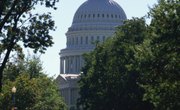A deflationary trap is a state of persistent deflation that can spiral downward in the face of zero percent interest, according to Yasushi Iwamoto, professor of economics at the University of Tokyo.
Decline in Prices
During a time of deflation, price levels decline across the economy, according to the Federal Reserve Bank of San Francisco. This can occur when banks limit credit and the availability of money decreases, lowering investment and spending.
Low Interest Rates
In times of recession, low interest rates can drop to zero as the Federal Reserve System tries to stimulate spending. However, these low rates discourage investment and hiring. The Federal Reserve Bank of San Francisco states that if unemployment rises, spending decreases; prices remain low and may even drop lower.
Worsening Deflation
Deflation may become a trap because conventional measures may not solve downward pressures, according to the Federal Reserve Bank of San Francisco. Workers may resist pay cuts, making employers unwilling to create more jobs as consumers resist spending. Banks resist lending if they already suffer from bad loans, which keeps the money supply tight.
Related Articles
References
Writer Bio
Lexa W. Lee is a New Orleans-based writer with more than 20 years of experience. She has contributed to "Central Nervous System News" and the "Journal of Naturopathic Medicine," as well as several online publications. Lee holds a Bachelor of Science in biology from Reed College, a naturopathic medical degree from the National College of Naturopathic Medicine and served as a postdoctoral researcher in immunology.









